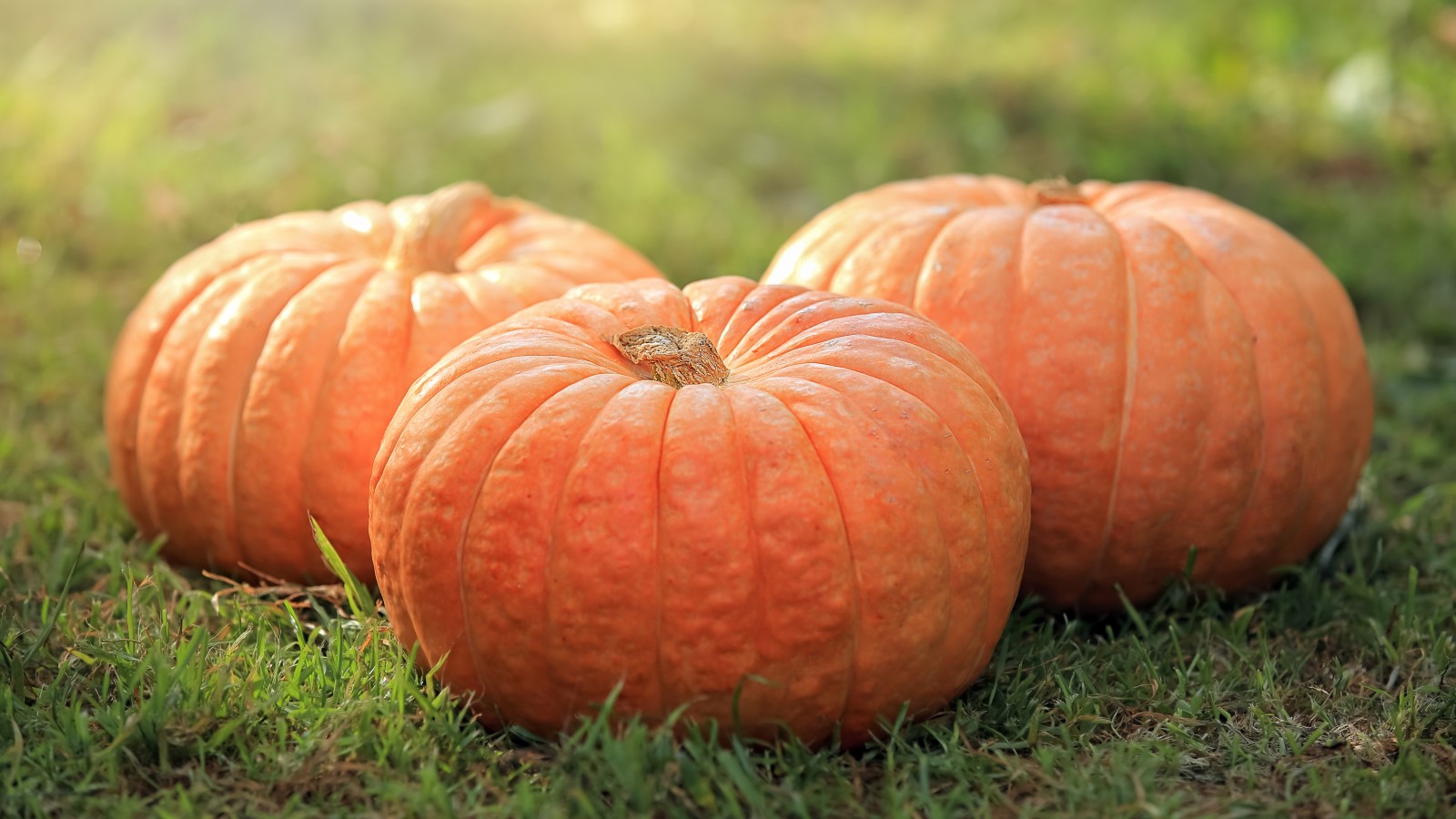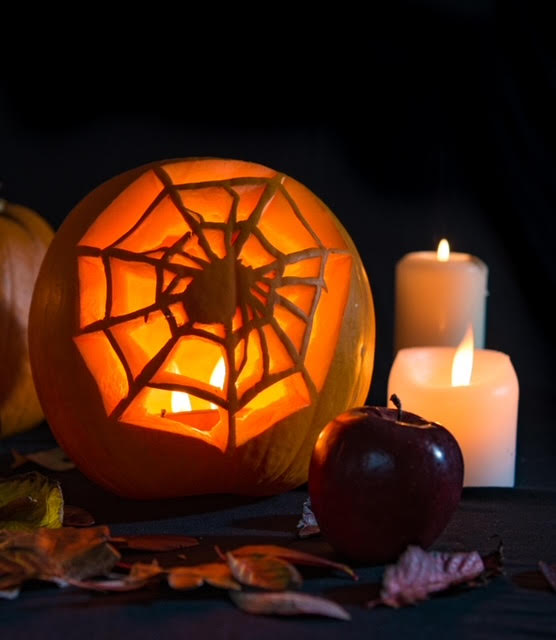Can Halloween pumpkins be eaten? The lowdown on consuming these fruits
Could the pumpkin on the porch make nutritious and tasty recipes? Get the expert view


Carving jack-o’-lanterns is a fall tradition, but have you ever wondered if a Halloween pumpkin is good for eating as well as for decorating?
An essential for Halloween decorating ideas as well as fall decor, pumpkins – which are actually fruits rather than vegetables – make a favorite Thanksgiving pie, and both their seeds and flesh can be consumed. Yet the pumpkins we buy for Halloween are likely to become spooky decorations rather than part of a meal, and end up in landfill when we’re done with them.
But while the idea of reducing waste by using a Halloween pumpkin in a recipe might be appealing, the question of whether the fruit on the front porch can be eaten isn’t as straightforward as it might seem and we’ve got the expertise you need to answer it.
The lowdown on eating Halloween pumpkins
Outdoor Halloween decor can demand a whole lot of pumpkins and while piling them up can be part of an impactful seasonal display, pumpkin carving ideas and pumpkin painting ideas make it hard to resist getting creative. Knowing how to carve a pumpkin can ensure your jack-o’-lantern looks its best for as long as possible, too.
But could you be eating the Halloween pumpkin you selected from a local farmer or the store? This is what you need to know.

Halloween pumpkins
There are different varieties of pumpkin on sale – and those grown for sale for Halloween may have characteristics that distinguish them from those traditionally prepared for recipes.
‘There are several pumpkin varieties typically used for eating,’ explains Mary Kiernan, a professor in the food studies program at Syracuse University’s Falk College. ‘Farmers plant carving pumpkins for just that purpose – they are thinner-skinned and better for carving. If you have ever carved thick rounder pumpkins and the flesh-to-skin ratio is very thick, you know what I am talking about.
Design expertise in your inbox – from inspiring decorating ideas and beautiful celebrity homes to practical gardening advice and shopping round-ups.
‘Cooking pumpkins are often referred to as sugar pumpkins,’ she continues. ‘They are naturally sweeter and the flesh has the texture like butternut squash.’
However, some pumpkins are versatile enough for carving or eating. ‘A Connecticut field pumpkin is one of my favorite varieties, as it has that classic pumpkin look and weighs in at about 15 pounds or so,’ says Deborah Niemann of the Thrifty Homesteader and author of Homegrown and Handmade: A Practical Guide to More Self-Reliant Living.
‘Although some say it’s not as sweet as other pumpkins, pie recipes have so much sugar in them, I’m not sure why anyone cares. It’s the perfect size for a jack-o’-lantern, or if someone is going to buy a pumpkin (or a few) to sit on their front porch for a month uncut, then this is a good choice as it will last for months – or until it freezes.’
Pumpkins for eating
If you want a pumpkin for eating, rather than Halloween, there are features that will recommend it. ‘If you are trying to decide because you are shopping at a farm stand, if the pumpkin is rounder and denser it will most likely be better for cooking,’ says Mary Kiernan. ‘Also look for similarities to other cooking squashes – if it is shaped like an acorn squash or the skin is the color of butternut, etc. those are also indicators.’
Can you eat a pumpkin that’s been carved?
As we’ve noted, a Halloween pumpkin may not be a variety that’s best for eating. However, if you don’t like the idea of food waste you could still use the seeds and flesh provided you set these aside when you’re carving and follow usual kitchen hygiene practices to cook them right away.
What’s not advisable is to eat a pumpkin that’s been carved and has been sitting around. ‘For safety reasons, I would not,’ says Mary Kiernan. ‘I teach my students that once a product (especially produce) has been modified from its original state, it should be treated as a potentially hazardous food and handled with TCS in mind. TCS is the acronym for time, temperature, and control for safety.’
Avoid landfill by composting
If you’re worried about waste, there is something you can do to keep Halloween pumpkins out of landfill once it’s time to take down holiday decor. ‘Pumpkins can be added to your compost pile, although I would cut it up into a few pieces as it will decompose a bit faster than if you leave it one big piece,’ says Deborah Niemann. ‘It’s also easier to bury in your pile if it’s in smaller pieces. You can feed it to worms in a worm bin, but I would scoop out all of the seeds first. Otherwise, you’ll wind up with the seeds sprouting and growing. Worms also appreciate it if you cut up a pumpkin into small pieces.’
Have a neighbor with backyard chickens? ‘They would probably love to have your pumpkin, assuming you have not painted it,’ says Deborah. ‘Just cut it open, and they’ll attack it like their velociraptor cousins.’
FAQs
What does Halloween pumpkin taste like?
The taste of a Halloween pumpkin depends on which type it is. Smaller pumpkins grown for eating are generally sweeter than those cultivated specifically for carving, and can be less stringy in texture, too. But if you’re cooking a Halloween pumpkin, the sugar and spices used in a sweet recipe can make it tastier, as can the herbs and spices you might add to a recipe for soup, for instance. Meanwhile, you could dry and roast seeds from any type of pumpkin. Don’t check out the taste of any Halloween pumpkin that’s been carved and left outside exposed to insects, dirt, and more.
Pumpkins are nutritious containing fiber, vitamins and minerals so upping your consumption can be a healthy move. They’re a versatile ingredient, suitable for more than simply the traditional pie. Of course, they can also attract wildlife too, so you might want to think about ways to stop squirrels eating your pumpkins. And while a trip to the pumpkin patch is a great family occasion, learning how to grow pumpkins can provide your own supply of diffferent varieties for carving, pie-making, and Halloween table decor.

Sarah is a freelance journalist and editor. Previously executive editor of Ideal Home, she’s specialized in interiors, property and gardens for over 20 years, and covers interior design, house design, gardens, and cleaning and organizing a home for Homes & Gardens. She’s written for websites, including Houzz, Channel 4’s flagship website, 4Homes, and Future’s T3; national newspapers, including The Guardian; and magazines including Future’s Country Homes & Interiors, Homebuilding & Renovating, Period Living, and Style at Home, as well as House Beautiful, Good Homes, Grand Designs, Homes & Antiques, LandLove and The English Home among others. It’s no big surprise that she likes to put what she writes about into practice, and is a serial house renovator.